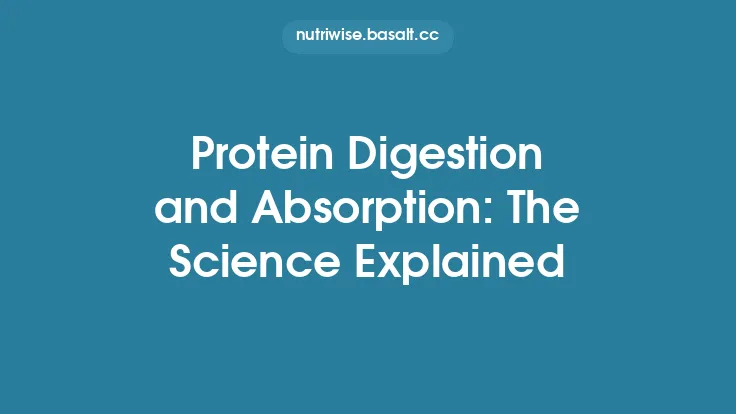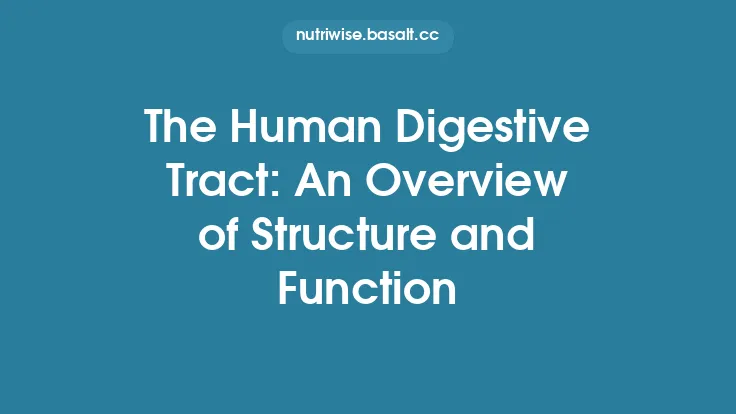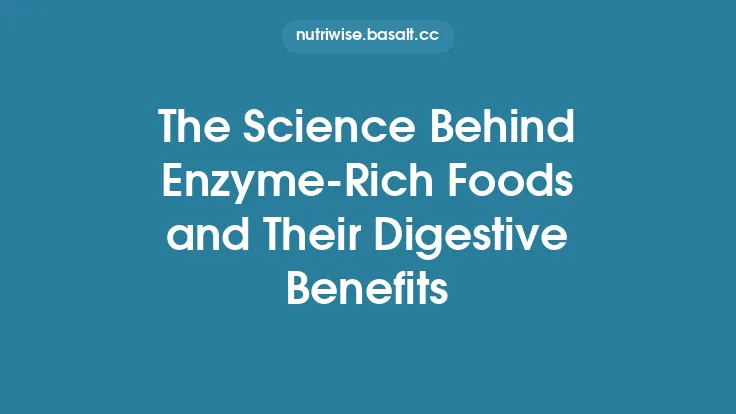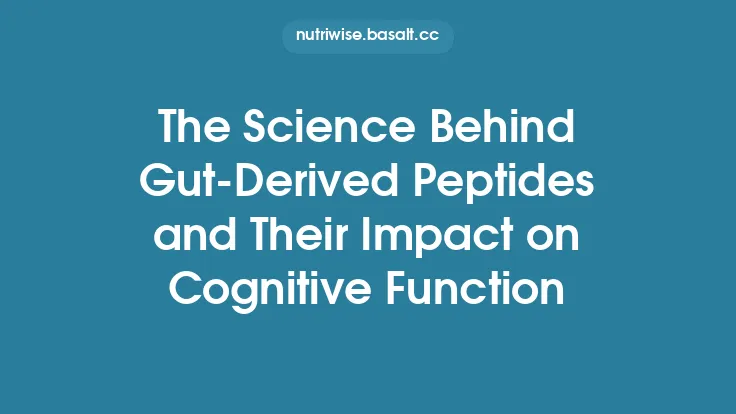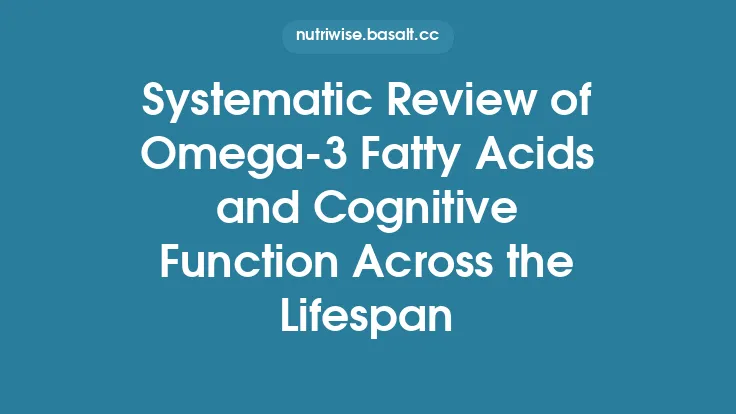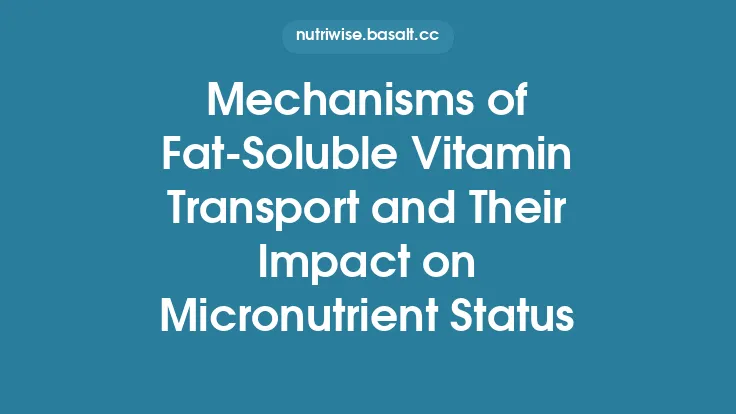The digestion of dietary fats is a highly coordinated process that transforms large, hydrophobic triglyceride molecules into absorbable components. While the human body consumes only a modest amount of fat relative to carbohydrates and proteins, the efficient breakdown of these lipids is essential for delivering energy, essential fatty acids, and fat‑soluble vitamins to every cell. Central to this conversion is a family of enzymes known as lipases, which act at the oil‑water interface to cleave ester bonds within triglycerides. Understanding how lipases function, where they act, and how their activity is regulated provides insight into both normal nutrition and a range of digestive disorders.
The Nature of Dietary Lipids and Why They Need Enzymatic Breakdown
Dietary fats are primarily composed of triglycerides—three fatty acid chains esterified to a glycerol backbone. Their hydrophobic character causes them to aggregate into large droplets in the aqueous environment of the gastrointestinal tract, limiting direct contact with enzymes. Moreover, the ester bonds linking fatty acids to glycerol are chemically stable; spontaneous hydrolysis under physiological conditions is negligible. Consequently, the body relies on specialized enzymes that can access the lipid–water interface, destabilize the droplets, and catalyze the hydrolysis reaction.
Major Lipases Involved in Human Fat Digestion
Human digestion employs several lipases, each operating at a distinct anatomical site and under specific physiological conditions:
| Lipase | Primary Site of Secretion | Main Substrate(s) | Distinctive Features |
|---|---|---|---|
| Lingual lipase | Salivary glands (tongue) | Triglycerides, especially short‑ and medium‑chain | Active at low pH; initiates lipid hydrolysis in the oral cavity and continues in the stomach |
| Gastric lipase | Chief cells of the stomach | Triglycerides, particularly those rich in short‑chain fatty acids | Functions optimally in the acidic gastric environment; contributes ~10–30 % of total fat hydrolysis |
| Pancreatic lipase | Acinar cells of the pancreas (released into duodenum) | Predominantly long‑chain triglycerides | Requires colipase and bile salts for full activity; responsible for the bulk of dietary fat digestion |
| Hepatic lipase | Liver sinusoidal endothelial cells (acts on circulating lipoproteins) | Triglycerides and phospholipids in chylomicron remnants and VLDL | Plays a role in post‑absorptive lipid remodeling rather than luminal digestion |
Among these, pancreatic lipase accounts for the majority of triglyceride hydrolysis in the small intestine, while lingual and gastric lipases provide a preparatory “pre‑digestion” that becomes especially important when gastric emptying is delayed or when the diet is rich in medium‑chain triglycerides.
Molecular Mechanism of Lipase Catalysis
Lipases belong to the serine hydrolase superfamily and share a conserved catalytic triad—serine, histidine, and aspartate—located within a deep active‑site cleft. The reaction proceeds through a classic two‑step mechanism:
- Acyl‑enzyme formation – The serine hydroxyl attacks the carbonyl carbon of the ester bond, forming a tetrahedral intermediate stabilized by an oxyanion hole. Collapse of this intermediate releases the first fatty acid (as a free fatty acid) and generates an acyl‑enzyme complex.
- Deacylation – A water molecule, activated by the histidine residue, attacks the acyl‑enzyme, producing the second fatty acid and regenerating the free enzyme.
A distinctive structural element of many lipases is the “lid” domain, a mobile amphipathic helix that covers the active site in the absence of a lipid interface. Upon encountering a triglyceride droplet, the lid undergoes a conformational shift (interfacial activation), exposing the catalytic pocket to the substrate. This mechanism ensures that lipase activity is tightly coupled to the presence of an oil–water interface, preventing unnecessary hydrolysis of membrane phospholipids or intracellular lipids.
Interfacial Activation and the Role of Colipase
Pancreatic lipase alone exhibits limited affinity for the negatively charged surface of emulsified fat droplets. Bile salts, secreted from the gallbladder, solubilize triglycerides into mixed micelles but also compete for the lipid surface, potentially displacing the enzyme. Colipase, a small basic protein secreted by the pancreas, resolves this conflict. It binds tightly to pancreatic lipase, forming a stable lipase–colipase complex that anchors the enzyme to the lipid interface even in the presence of high bile‑salt concentrations. This partnership is essential for maximal catalytic efficiency in the duodenum.
Sequential Steps of Fat Digestion in the Small Intestine
- Emulsification – Bile salts reduce surface tension, breaking large fat globules into submicron droplets, dramatically increasing the total interfacial area.
- Enzyme adsorption – The lipase–colipase complex adsorbs onto the droplet surface, positioning its active site for optimal substrate access.
- Hydrolysis – Pancreatic lipase preferentially cleaves the ester bond at the sn‑1 and sn‑3 positions of triglycerides, yielding two free fatty acids (FFAs) and a 2‑monoacylglycerol (2‑MAG). Lingual and gastric lipases can also act on the sn‑2 position, albeit less efficiently.
- Product solubilization – The newly formed FFAs and 2‑MAG, together with bile salts, assemble into mixed micelles that remain soluble in the intestinal lumen.
Absorption and Post‑Digestive Processing of Lipolysis Products
Mixed micelles transport the lipolysis products to the brush‑border membrane of enterocytes. Specific transporters and passive diffusion facilitate uptake:
- Free fatty acids enter via fatty acid transport proteins (FATPs) and CD36.
- Monoacylglycerols are taken up primarily through passive diffusion, aided by the high lipid solubility of the 2‑MAG.
Inside the enterocyte, FFAs and 2‑MAG are re‑esterified to form triglycerides within the endoplasmic reticulum. These newly synthesized triglycerides are then packaged with cholesterol, phospholipids, and apolipoproteins to generate chylomicrons, which are secreted into the lymphatic system and eventually enter the bloodstream.
Hormonal and Neural Regulation of Lipase Secretion
The release of pancreatic lipase is tightly coordinated with the presence of nutrients in the duodenum:
- Cholecystokinin (CCK) – Secreted by I‑cells in response to fatty acids and amino acids, CCK stimulates pancreatic acinar cells to secrete digestive enzymes, including lipase, and triggers gallbladder contraction.
- Secretin – Released in response to acidic chyme, secretin promotes bicarbonate secretion from pancreatic ductal cells, creating an optimal pH for lipase activity without directly influencing enzyme quantity.
- Vagal stimulation – Parasympathetic input via the vagus nerve enhances pancreatic enzyme secretion during the cephalic phase of digestion.
Feedback mechanisms also exist: high concentrations of free fatty acids in the duodenum can inhibit further CCK release, preventing excessive lipase output.
Genetic and Physiological Variations in Lipase Function
Individual differences in lipase activity arise from both genetic and environmental factors:
- Pancreatic lipase deficiency – Rare autosomal recessive mutations in the *PNLIP* gene reduce enzyme synthesis, leading to steatorrhea and fat‑soluble vitamin deficiencies.
- Cystic fibrosis – Thickened secretions obstruct pancreatic ducts, diminishing the delivery of lipase (and other enzymes) to the intestine.
- Age‑related decline – Elderly individuals often exhibit reduced pancreatic exocrine output, contributing to mild malabsorption of fats.
- Dietary adaptation – Populations with traditionally high‑fat diets (e.g., Arctic Inuit) show up‑regulated expression of lipase genes and enhanced colipase production, reflecting evolutionary adaptation.
Clinical Assessment of Lipase‑Mediated Digestion
When fat malabsorption is suspected, clinicians employ several diagnostic tools:
- Fecal elastase‑1 test – Although primarily a marker of pancreatic exocrine function, low fecal elastase correlates with reduced lipase secretion.
- 72‑hour fecal fat collection – Quantifies unabsorbed fat; values >7 g per day suggest significant lipase insufficiency.
- Serum pancreatic lipase – Elevated levels can indicate pancreatitis but are not directly informative about digestive capacity; however, low basal levels may hint at chronic insufficiency.
Therapeutic Strategies Targeting Lipase Deficiency
Management of lipase‑related malabsorption focuses on enzyme replacement and dietary modification:
- Pancreatic enzyme replacement therapy (PERT) – Formulations containing enteric‑coated lipase, often combined with amylase and proteases, are timed with meals to mimic physiological secretion.
- Medium‑chain triglyceride (MCT) supplementation – MCTs are more water‑soluble and can be absorbed directly via the portal vein without requiring extensive lipolysis, providing an alternative energy source for patients with severe lipase deficiency.
- Optimizing bile salt availability – In conditions where bile flow is compromised (e.g., cholestasis), bile acid sequestrants or ursodeoxycholic acid may improve micelle formation and thus lipase efficiency.
Dietary Practices That Support Optimal Lipase Activity
While the body generally produces sufficient lipase for typical diets, certain nutritional choices can enhance or preserve enzyme function:
- Balanced fat composition – Including a mix of long‑chain (e.g., oleic, linoleic) and medium‑chain fatty acids ensures that both lingual/gastric and pancreatic lipases are engaged.
- Adequate protein intake – Amino acids stimulate CCK release, indirectly promoting pancreatic lipase secretion.
- Avoiding excessive alcohol – Chronic alcohol consumption impairs pancreatic acinar cell health, reducing lipase output.
- Spacing of high‑fat meals – Allowing sufficient inter‑meal intervals prevents overwhelming the lipase system and supports complete digestion.
Emerging Research Directions
The field of lipid digestion continues to evolve, with several promising avenues:
- Engineered lipases – Protein engineering techniques are producing lipase variants with higher resistance to bile‑salt inhibition, potentially improving the efficacy of enzyme supplements.
- Nanocarrier delivery – Encapsulating lipase in pH‑responsive nanoparticles may protect the enzyme from premature degradation and release it precisely at the duodenal site.
- Microbiome interactions – Certain gut bacteria possess lipase‑like enzymes that can further hydrolyze residual triglycerides, influencing overall fat absorption and metabolic outcomes.
- Genomic profiling – Large‑scale population studies are identifying polymorphisms in *PNLIP and CLPS* (colipase) that correlate with variations in postprandial lipid handling, opening the door to personalized nutrition strategies.
Concluding Perspective
Lipases are the linchpin of dietary fat digestion, converting bulky, insoluble triglycerides into absorbable fatty acids and monoacylglycerols through a finely tuned series of biochemical events. Their activity hinges on structural adaptations (such as the lid domain and interfacial activation), cooperative partners like colipase and bile salts, and precise hormonal regulation. Understanding the nuances of lipase function not only clarifies how the body extracts essential nutrients from fats but also informs clinical approaches to disorders of malabsorption and guides nutritional recommendations for optimal digestive health. As research uncovers new molecular insights and innovative therapeutic tools, the science of fat digestion will continue to deepen, offering ever‑more effective ways to support the vital role of lipases in human nutrition.
